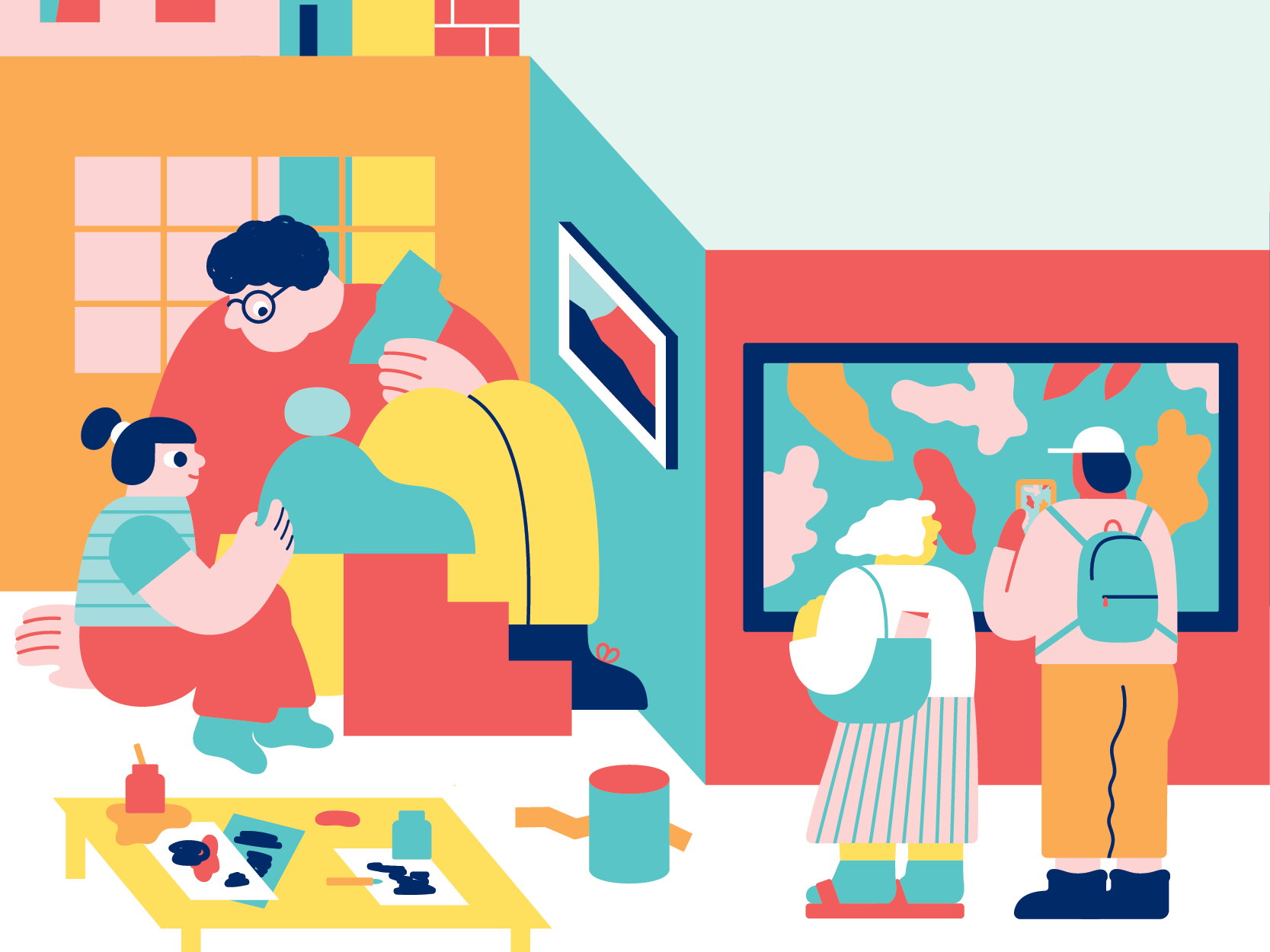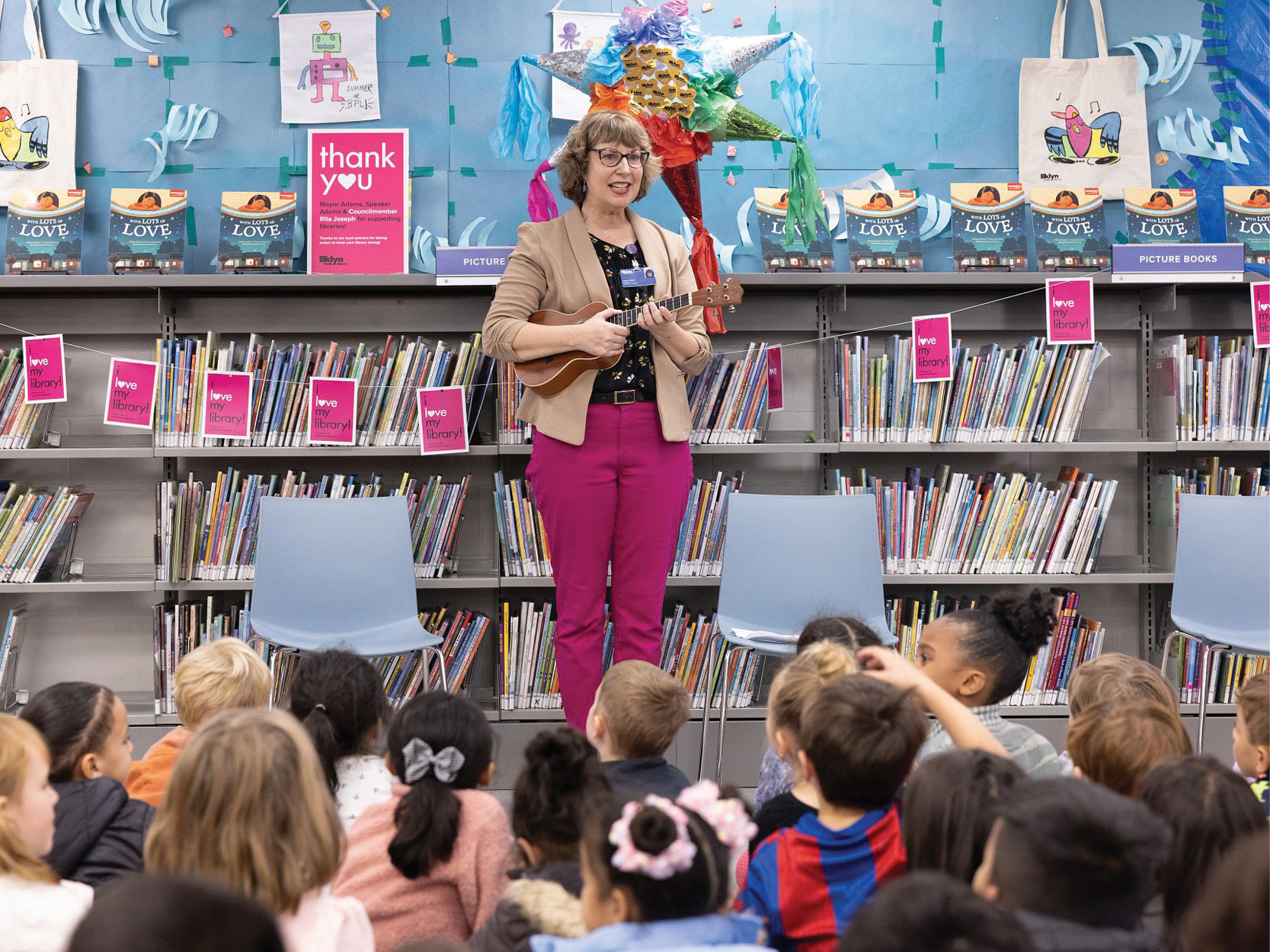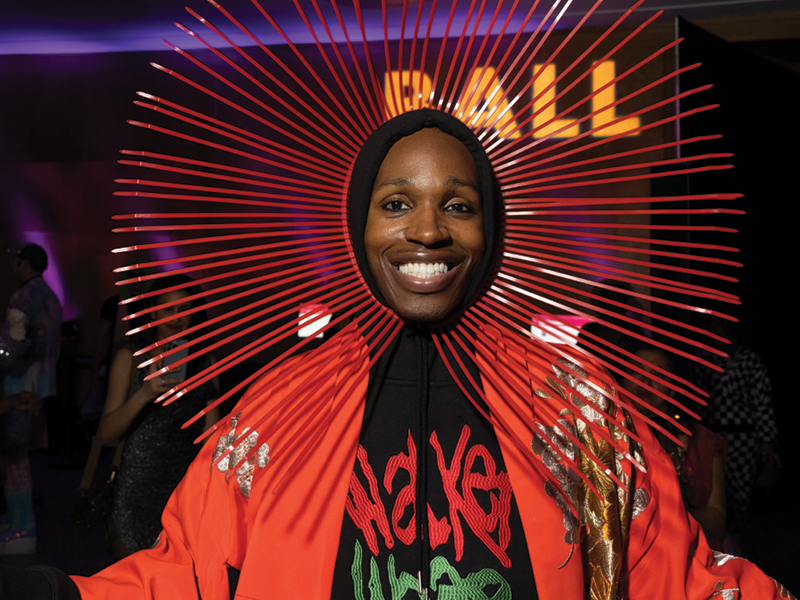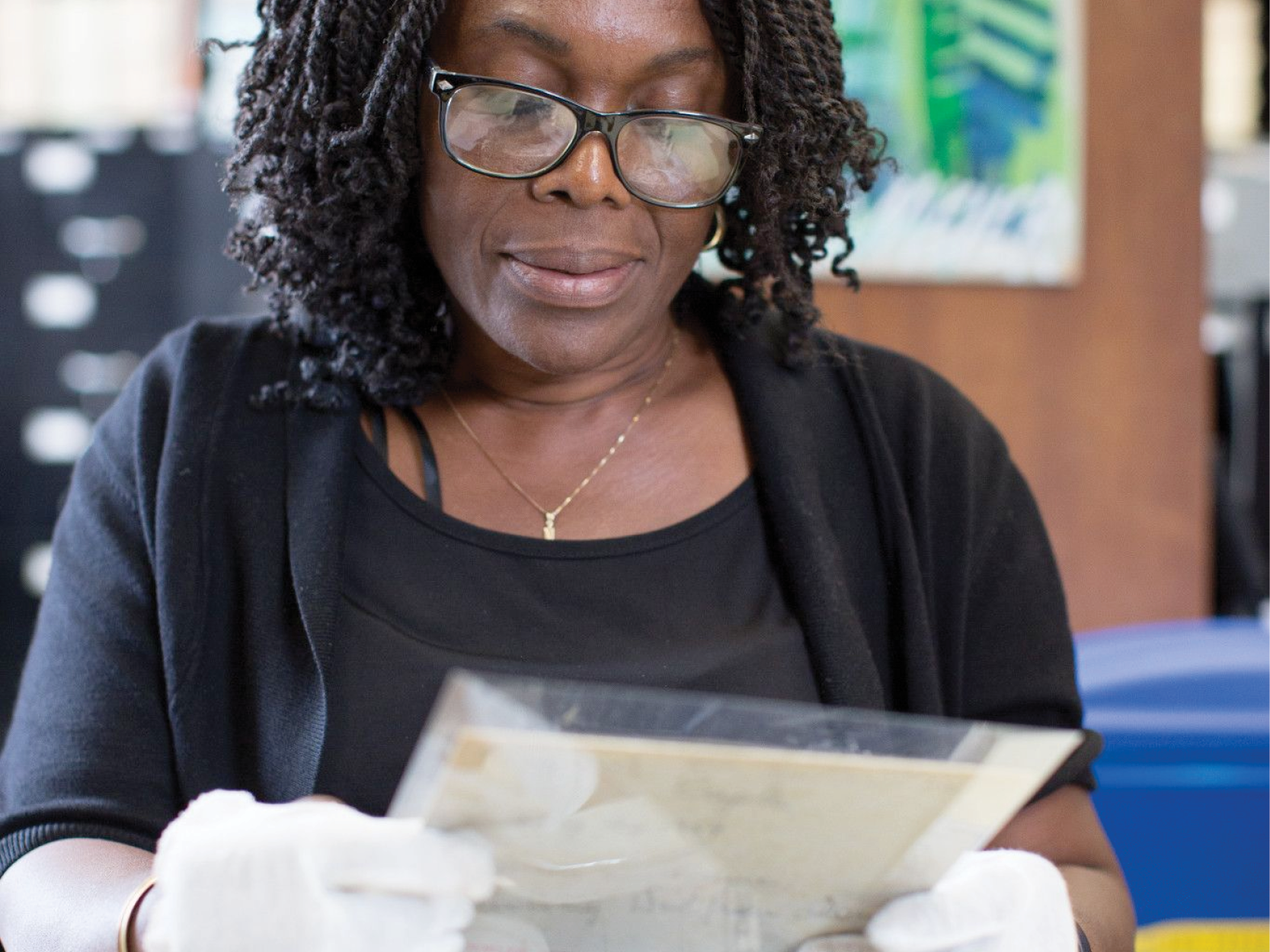
A young toddler carefully pokes long glittery pipe cleaners, one after the other, through tiny holes in a large plastic colander. After he finishes, he places it on his head and screams, delightedly, “HAT!” Nearby, a group of crawling and rolling babies maneuver around a brightly colored, multi textured surface made of bubble wrap, textured bath mats, towels, and reflective fabric. They reach for crinkled colorful pieces of cellophane, and brightly colored textured balls.

In another corner, seated babies play in a baby pool full of shredded paper, as more active toddlers gleefully throw bunches of paper in the air. Caregivers stay close and follow prompts for how to turn these sensory and motor explorations into language learning opportunities.
Welcome to the Big Brooklyn Playdate! At Brooklyn Public Library, we regularly host these sensory-learning events for children ages 0-3 and their caregivers. Branches host smaller versions, for example the upcoming Bedford, Crown Heights, Borough Park and New Utrecht Playdates. Once a year, we hold a borough wide event called the Big Brooklyn Playdate, and turn the Central Library lower level into a world of sensory and constructive play, fine and gross motor movement opportunities, art explorations and more for up to 150 babies and toddlers and their caregivers.

The idea behind the Playdate is simple. Babies and toddlers learn through hands on, concrete experiences with materials that not only delight and engage them, but teach important cognitive skills such as object permanence, spatial awareness and problem solving. As babies and toddlers interact with the world around them, they start to learn how their own bodies and movement can affect their environment. Our playdate activities, or “Play Recipes” as we call them, have many entry points for learning. They are open ended, so children explore them at their developmental level. For example in our block zone, where DIY blocks made from cereal and other food boxes cover the floor, babies may simply hold or even mouth a block, noticing its shape, size, texture, and color-- a sensory experience that helps build the brain. Older toddlers will stack and knock down a simple tower, becoming experts in the concept of cause and effect and gravity. We provide prompts for caregivers to scaffold, or build on their learning by describing what the child is doing and adding something new to try. In every activity and interaction, there is language learning taking place.

Babies usually like the box the new shiny toy comes in more than the new shiny toy. We trust that there is logic and learning motivating this approach, and so we try to provide and create activities using everyday objects--things that can be found around the house, at the grocery store, or collected over time, such as fabric or paper for making a texture collage. We also want parents and caregivers to leave with ideas they can implement right away with materials they may already have at home. A collection of paper towel rolls has more versatility and possibility than a fancy store bought baby toy. Learn about gravity by taping them to a wall and dropping small cotton balls or craft puffs through them!
Here are some of our favorite Play Recipes for you to explore at home:
- No Mess Fingerpaint: Fingerpaint, without the mess! Take a large gallon size zip-closure freezer bag. Fill it with two primary paint colors (red, yellow, or blue) or a primary color and black or white. Squeeze the excess air from the bag and zip it closed. Tape the bag flat. Explore using hands and fingers--push paint around, mix colors, and talk about what you see and feel.
- Color Surprise Box: You will need colorful scarves or socks and an empty facial tissue box (the “boutique” size box works best). Stuff a couple of socks or scarves in the opening. Let the child reach in and pull out a colorful item. Talk about each color as you pull them out.
- Mystery Bottles: Take any clear bottle with a lid and make sure it is clean and dry (plastic orange juice or soda bottles work well). Put some colorful objects inside like feathers, ribbons, pieces of paper, small rubber balls, etc. Put the lid on and tape it closed. Talk about colors, and what you see. Experiment with shaking and rolling the bottle.
- Black and White Cube: Infants see black and white images best since their vision is still developing. Take a tissue box and cover it with black and white pictures. The bolder the design the better. Cover the pictures with clear contact paper or packing tape to protect it. This is a great one for tummy time!
- Sensory Bin: Use a plastic tub or storage container, and fill it with a fun sensory material: rice, potato flakes, split peas, beans, corn, oats, cooked spaghetti, and more! Add a few toys or objects to play with or search for.
For more ideas, join us at the next Playdate by checking our calendar.
This blog post reflects the opinions of the author and does not necessarily represent the views of Brooklyn Public Library.
Of course, what a magnificent
Post a Comment
While BPL encourages an open forum, posts and comments are moderated by library staff. BPL reserves the right, within its sole discretion, not to post and to remove submissions or comments that are unlawful or violate this policy. While comments will not be edited by BPL personnel, a comment may be deleted if it violates our comment policy.
eNews Signup
Get the latest updates from BPL and be the first to know about new programs, author talks, exciting events and opportunities to support your local library.







